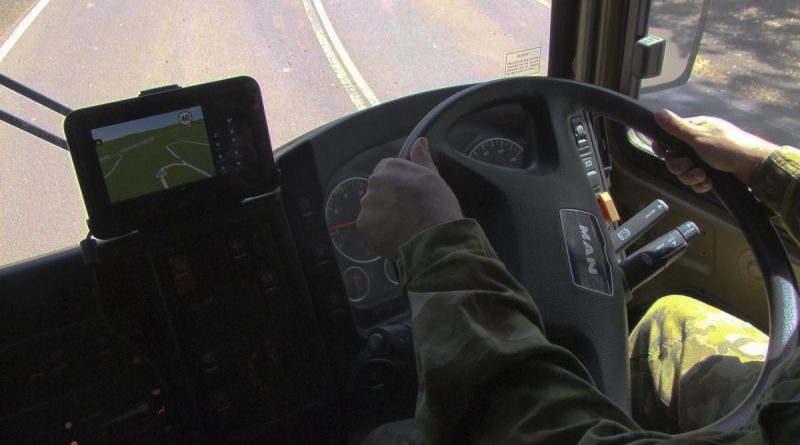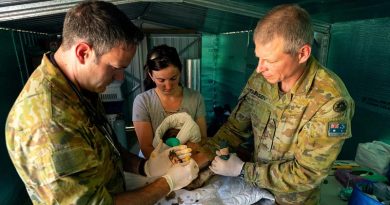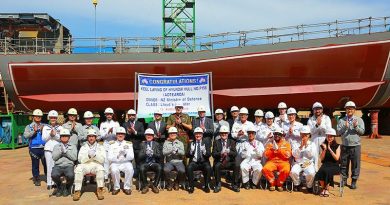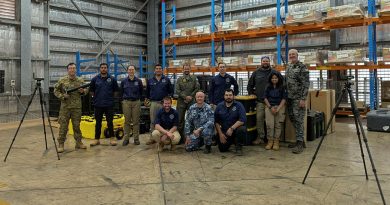Vehicle tracking system trials in ADF

A telematics system that tracks the speed and position of vehicles, as well as the driver’s hours, has been rolled out to many Army vehicles with the aim of improving safety, but with the added benefit of saving time.
CAPTION: Army has rolled out a system that tracks vehicle speed, location and driver hours.
Corporal Jess Hardy, an instructor at the Army School of Transport, used the system during a trial at the 3rd Combat Service Support Battalion.
For each task, drivers log on to tablets, mounted to the vehicle windscreen, which can also be remotely loaded with heavy-vehicle permits.
“It’s going to alleviate a whole lot of paperwork that we have to take with us on drives. It’s also got the vehicle checklist before we depart,” she said.
“In the past, if we were on an exercise and permits changed, you’d have to find a Defence terminal, print off permits and make sure every vehicle had them before you started driving again.”
Location and speed data also can be remotely monitored from computers and mobile devices via an unclassified system.
The tablets can alert drivers if they hit a certain speed and inform a transport manger if they go higher.
“If we’re coming up to our break, an alarm will go off to say it’s your 15-minute or half-an-hour stop,” Corporal Hardy said.
“It tells you when to pull over and have a rest − there’s no ifs or buts about it.”
The system also provides a central, electronic log of all driver tasks and hours.
The system is approved for use in field-training areas and, when mobile coverage isn’t available, it saves the data and uploads it when the tablet is back in range.
“It could keep some people out of trouble; they’ll be more cautious about what they’re doing,” Corporal Hardy said.
Headquarters 17 Brigade first trialled 152 units from early 2019.
Following the initial success of the trial, Army Headquarters has embarked on an expanded pilot program, which will introduce a further 1650 units.
Telematics units have been delivered across Force Command and the Air Force, based on a commercial off-the-shelf system used by civilian trucking and logistics companies.
Chief Driving Instructor Warrant Officer Class 1 Roger Nixon said the aim of the technology was to positively influence driver behaviour and reduce the number of vehicle accidents.
“With a central repository of accident reports, we now have a more detailed understanding of the impacts to capability and personnel,” he said.
“These sorts of telematics systems are recognised across civilian industry and foreign militaries as having a positive effect.”
Australian studies have shown the use of these devices has reduced accident rates in civilian industry.
The devices also result in a reduction in average speeds, aggressive braking and acceleration and a decreased fuel consumption and reduced vehicle wear and tear.
“This is not about command knowing exactly where you are; the system is being introduced to improve safety outcomes and maintain capability” Warrant Officer Nixon said.
The system can provide commanders and driving instructors detailed, driver-specific data to enable tailored individual driver training and continues improvements to the driver training system.
“This telematics system is one of a range of initiatives that we are implementing to improve Defence’s road transport operations and safety for drivers” he said.
Warrant Officer Nixon said the system’s benefits should become apparent across Army during this year.
.
.

.
.





